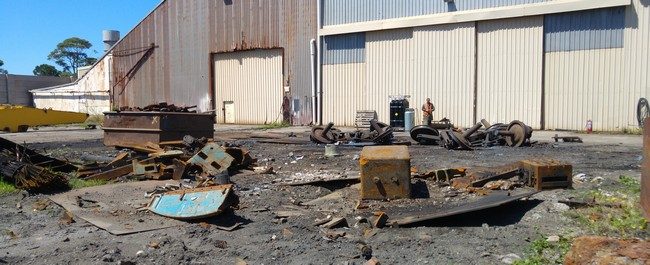What’s involved in a Phase II environmental site assessment?
A Phase II environmental site assessment is undertaken to find and quantify contamination. It involves field works to gather samples for laboratory testing which are then analysed to work out the nature and extent of contamination. Even though contaminant profiles and site features vary widely, a consultant’s approach to performing a Phase II environmental site assessment is basically the same. In fact, legislation and various assessment guidelines are in place to encourage a consistent approach to environmental assessments and the management of contaminated land.
What does a consultant do?
The consultant’s job is to identify and quantify contamination. Many environmental investigations include soil and groundwater sampling but may extend to other media such as vapours, surface waters or buildings. After data collection and analysis is completed, the consultant prepares a report that describes the work that was done, scientific results and conclusions.
In general, there are six phases to every investigation.
- Scope of work
The consultant needs to come up with an assessment strategy and sampling plan. The type and amount of samples needs to be extensive enough to demonstrate the presence of contamination and establish its boundaries. The sampling strategy will be based on an initial review of the site (usually called a Phase I or preliminary site investigation). A phase 1 environmental site assessment will look at the past history of the site in order to pinpoint potential concerns and environmental risks.
- Field work
After determining the most likely contaminants and areas of impact at the site, the consultant will collect samples. In the case of soil, samples at different depths may be collected requiring drilling equipment. Drilling is also required to install groundwater monitoring wells which enable sample collection and other analyses about groundwater flow. Air monitoring equipment and other techniques are used to establish indoor air quality and vapour risks. Asbestos assessments are also common and may involve sampling of materials or building structures.
Environmental samples need to be collected using established procedures and stored correctly on the way to the lab. For example, some samples need to be kept cold or must be carefully sealed to prevent evaporation. It is very important that adequate quality control procedures are followed during sampling and transportation.
- Laboratory analysis
A variety of different instruments and techniques are used to detect and analyse different kinds of contaminants. The consultant must ask for the right type of analytical technique to ensure relevant data. Likewise, if samples are not correctly collected or handled, laboratory testing may not provide useful information.
- Analysis of site conditions
A consultant needs to analyse the geology and hydrogeology of a site to help determine how the contaminants might behave in the local ground conditions. This evaluation will help to work out the potential and means for contaminants to migrate around or off the site.
- Evaluate the nature and extent of contamination
Once laboratory and site data is collated, the consultant will aim to determine what contamination is present on a site, its source, how far it has spread and what or who it will impact. Sometimes budget constraints limit the extent of sampling. Such data gaps can generate uncertainty on the nature and extent of contamination.
- Conclusions
At the conclusion of a Phase II environmental site assessment, the consultant will prepare a report that describes all the activities undertaken. It should cover the field techniques use, laboratory data, QA/QC methods, and analyses performed. The report needs to answer the questions posed by the investigation. Typically, this is whether contamination exists at a site above prescribed levels of safety for a certain use and whether the contamination presents a potential risk of harm to any site users. If there are data gaps, the report must also point out any limitations in the report’s conclusions. If required by the scope, the consultant may also advise on remediation requirements and associated costs.
Understanding environmental reports
Environmental assessments are necessarily technical and may be difficult to interpret if you are unused to working with scientific data. If you are buying or developing industrial land and want advice on environmental issues, contact Geo-Logix on (02) 9979 1722.

